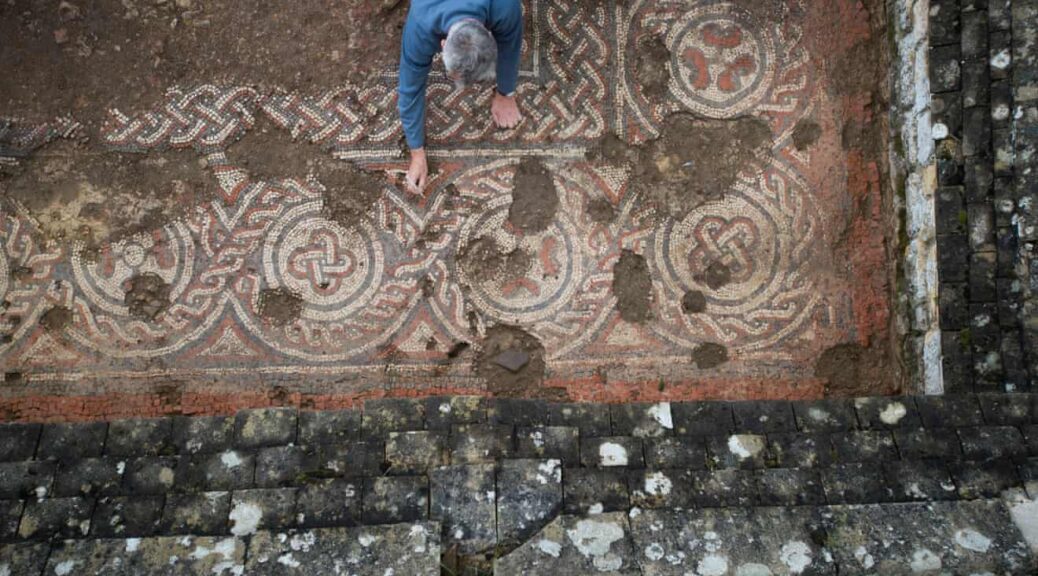Stunning dark ages mosaic found at Roman villa in Cotswolds
In Britain, life at the beginning of the dark ages is commonly perceived to be a fairly uncomfortable period, an epoch of trouble and misery with the expulsion of Roman rulers leading to economic misery and cultural stagnation.
But a stunning discovery at the Chedworth Roman villa in the Cotswolds suggests that some people at least managed to maintain a rich and sophisticated lifestyle.
National Trust archaeologists have established that a mosaic at the Gloucestershire villa was probably laid in the middle of the fifth century, years after such homes were thought to have been abandoned and fallen into ruin.
The mosaic, found in what may have been a summer dining room, is not quite as splendid as the ones at the villa dating to Roman times, but it seems to show the residents were clinging on to a very decent standard of living.
Martin Papworth, a National Trust archaeologist, said the find was hugely exciting. He said: “The fifth century is a time which marks the beginning of the sub-Roman period, often called the dark ages, a time from which few documents survive, and archaeological evidence is scarce.”
Four hundred years of Roman rule ended in Britain in about 410AD. Papworth said: “It has generally been believed that most of the population turned to subsistence farming and, after the break with Rome, Britannia’s administrative system broke down into a series of local fiefdoms.

“What is so exciting about the dating of this mosaic at Chedworth is that it is evidence for a more gradual decline.
The creation of a new room and the laying of a new floor suggests wealth, and a mosaic industry continuing 50 years later than had been expected.”
The fifth-century mosaic is of an intricate design. Its outer border is a series of circles alternately filled with flowers and knots. It is of poorer quality than the fourth-century ones found at the villa and others like it.
There are several mistakes, suggesting the skills of the craftspeople were being eroded. But it is nevertheless an attractive floor.
The identities of the people living at the villa in this era are lost in the mists of time. “They could have been dignitaries, people with money, influence, and friends in high places,” said Papworth.
He suggested it was also possible that the area was not so badly affected by hostile raids that were taking place in the north and east.
“It is interesting to speculate why Chedworth villa’s owners were still living in this style well into the fifth century. It seems that in the West Country, the Romanised way of life was sustained for a while.”
It was possible to date the mosaic thanks to traces of carbon found in a trench dug to build a wall to create the room the mosaic was found in.
Dating the carbon strongly suggested the wall was built between 424 and 544 AD. The mosaic was laid in the newly created room after the wall was built.
Stephen Cosh, who has written about Britain’s known Roman mosaics, said: “I am still reeling from the shock. It will be important to research further sites in the region to see whether we can demonstrate a similar refurbishment at other villas which continued to be occupied in the fifth century. But there is no question that this find at Chedworth is of enormous significance – it’s tremendously exciting.”
